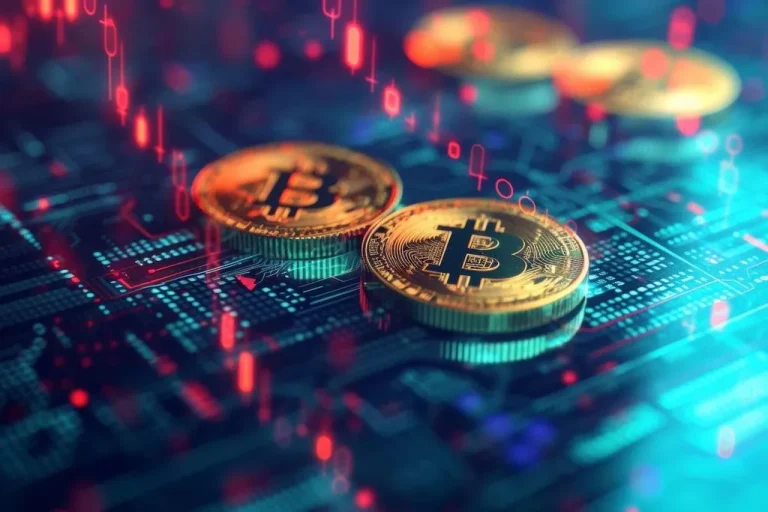
Altcoins vs Tokens: Whats the Difference?
Content
Altcoins, the alternative cryptocurrencies to Bitcoin, offer a diverse range of options, each tailored to serve specific purposes and functions within the digital finance ecosystem. These variants can be broadly grouped based on their underlying mechanisms and goals. For example, the Basic Attention Token (BAT) is both a value token and a utility token. It has been created with a specific purpose to conduct transactions and obtain services on the BAT platform, and is used as a unit of account between the platform Decentralized application users.
The most common types of tokens are
Stablecoins – Stablecoins are a type of altcoin that aim to maintain a stable value by pegging their price to an external asset such as fiat currency or commodities. This comprehensive beginner’s guide aims to provide you with a clear understanding of what altcoins are, their purpose, and how they differ from Bitcoin. When buying highly speculative assets such as cryptocurrency, it’s important to understand that you could lose your entire investment. Memecoins are a kind of cryptocurrency that has taken the public’s fancy, perhaps through social media or the tweets of celebrities such as Tesla CEO Elon Musk. Memecoins often have a lottery-like aspect, increasing in price very quickly and then going on to fall precipitously. This text https://www.xcritical.com/ is informative in nature and should not be considered an investment recommendation.

Top 10 Altcoins To Watch in 2024 (Updated)
Its main functionality is that Ripple enables instant money transfers worldwide with a low transaction cost. Ripple’s founders, Ryan Fugger and Jed McCaleb, initially created RipplePay, which later evolved into what we now know as Ripple. With its system, which uses products like xRapid what is the difference between token vs cryptocurrency and xCurrent, Ripple provides speed and less volatility in price fluctuations through validation and rate behavior.
What Are the Most Popular Altcoins?

In altcoins, there’s a key difference between ‘coins’ and ‘tokens.’ Coins, like Bitcoin and Ethereum, have their own blockchains and act as digital money. Tokens, like Chainlink or Uniswap, are built on existing blockchains (like Ethereum) and often represent assets or utilities in a specific ecosystem. For example, a token might be used to access a service, represent a stake in a project, or even track real-world assets. Exploring altcoins is about diversifying your crypto portfolio and discovering various digital currencies, from utility tokens to stablecoins. Plus, you’ll find out how Kriptomat’s large selection of cutting-edge trading tools can make your altcoin investing effortless.
- In the realm of cryptocurrency valuations, it’s common to see altcoins priced in Bitcoin, given BTC’s dominant stature.
- According to Coingecko, more than 14,500 cryptocurrencies were in circulation as of August 2024.
- On 19 December 2017, Yapian, the owner of South Korean exchange Youbit, filed for bankruptcy after suffering two hacks that year.[186][187] Customers were still granted access to 75% of their assets.
- Realistically, the top cryptocurrencies are ranked as such for a reason.
- This figure is indicated by a cryptocurrency’s current market price times the total number of coins in the market (known as the circulating supply).

The cryptocurrency market, irrespective of coin pedigree, remains nascent, dynamic, and unpredictable. As the crypto sector continues its dance with global finance, a judicious and well-researched approach is advised for all potential participants. Though utility tokens are available for acquisition on various exchanges, their true essence lies in their utility. They are designed to be consumed or used within their respective ecosystems, ensuring the smooth operation and enhancement of blockchain networks.
The purpose of this website is solely to display information regarding the products and services available on the Crypto.com App. It is not intended to offer access to any of such products and services. You may obtain access to such products and services on the Crypto.com App. The value of crypto assets can increase or decrease, and you could lose all or a substantial amount of your purchase price. When assessing a crypto asset, it’s essential for you to do your research and due diligence to make the best possible judgement, as any purchases shall be your sole responsibility. The main reason, however, behind an altcoin failing is a lack of utility, meaning that its use case overlaps with another more popular altcoin that offers a very similar service to the user.
Ethereum revolutionized the altcoin market thanks to its “smart contract” technology. Smart contracts are blockchain-based programs capable of executing numerous complex tasks according to their instructions. For instance, smart contracts on decentralized finance (DeFi) exchanges recognize each user’s crypto wallet and fulfill trade requests without third-party intermediaries. Ethereum’s smart contracts also make it easier for developers to create new cryptocurrencies on its protocol, contributing to the continued rise of altcoins. This is a blockchain platform that aims to provide a more sustainable and efficient network for smart contracts and dApps. It uses a proof-of-stake consensus mechanism to secure the network, and its native cryptocurrency, ADA, is used for transactions and to participate in the consensus process.
Balancing altcoin investments means evaluating their risk-reward profiles and matching them with your goals and risk tolerance. A mix of established cryptocurrencies like Bitcoin and Ethereum, along with carefully chosen altcoins, creates a diverse, market-resilient portfolio ready to capitalise on different crypto trends. Altcoin is a cryptocurrency alternative to Bitcoin that uses the same decentralized peer-to-peer (P2P) payment network. Its name is a portmanteau of “alternative” and “coin.” Since Bitcoin is widely regarded as the first of its kind, new cryptocurrencies are considered alternatives. In conclusion, altcoins offer an exciting and diverse range of opportunities for traders looking to explore the cryptocurrency market beyond Bitcoin and Ethereum.
Another popular use case for utility tokens is as decentralized voting instruments in DAOs. A great example of this is Uniswap, a completely decentralized and automated crypto exchange. It uses UNI as its native token, an ERC-20 supported by the Ethereum blockchain. And UNI is easy to swap with any other ERC-20 token, just like the SAND we mentioned earlier. In short, this fungible token standard allows users to create, issue and manage currencies supported by Ethereum. It actually fueled the ICO craze of 2017, with countless projects launching their own tokens on the blockchain.
They typically gain popularity quickly, often hyped online by prominent influencers or investors attempting to exploit short-term gains. Security tokens are tokens that represent fundraising efforts or ownership. Otherwise, the tokens are worthless because they wouldn’t represent anything. Security tokens are regulated by the Securities and Exchange Commission because they are designed to act as securities. It was designed by Vitalik Buterin, Dr. Gavin Wood, and a few others to be used in Ethereum, the world’s largest blockchain-based virtual machine. Ether (ETH) is used to pay network participants for the transaction validation work their machines do.
It is also used as collateral (called staking) for the privilege of becoming a validator and block proposer. The first altcoins launched in 2011, and, by now, there are thousands of them. Early altcoins aimed at improving aspects of Bitcoin such as transaction speeds or energy efficiency. More recent altcoins serve a variety of purposes depending on the goals of the developers.
An initial coin offering (ICO) is the cryptocurrency industry’s equivalent of an initial public offering (IPO). A company looking to raise money to create a new coin, app, or service launches an ICO to raise funds. For example, they might be used to purchase services, pay network fees, or redeem rewards.
Several emerging cryptocurrency coins, like Litecoin, are built and supported by Bitcoin’s rules. These coins use complex algorithms to secure and regulate the transfer of funds and record transactions on the blockchain. One essential feature of a cryptocurrency coin is that it has its own independent blockchain. This means that its value is specific to the network it operates in and the rules that govern it. Coins operate on their own blockchain network and are used as a payment method. Cryptocurrency tokens can also be used as a method of payment, but operate on an existing blockchain.
This is a more extreme standard than banks are usually held to when it comes to other assets. Digicash required user software in order to withdraw notes from a bank and designate specific encrypted keys before they could be sent to a recipient. With the tokens, you will probably have found Cardano and Polygon in your research. These two platforms have a considerable amount of projects already built under their ecosystem and keep growing their following every day.
